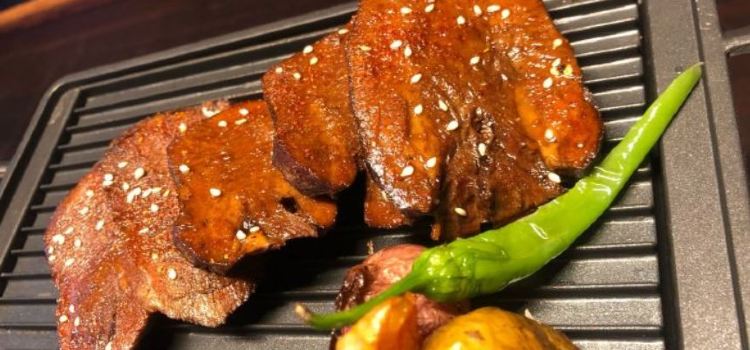上隐
4/52 Reviews
Jiashan South Station AreaKZT12857

Open Now|11:00-13:30
0573-84297317
What travelers say:

It is the ceiling of Japanese food in Jiashan.
The wagyu in wagyu hot pot (sukiyaki or kelp hot pot) is very good. Foie gras and tuna belly are also recommended; the grilled salmon is quite special because it has a layer of caramel on it and is very delicious. The fried shrimp tempura is made with very large shrimps, which is also very delicious.
More
Reviews of 上隐
Some reviews may have been translated by Google Translate
4/5Excellent
All (2)
Latest
Photo reviews (1)
Positive reviews (1)
It is the ceiling of Japanese food in Jiashan. The wagyu in wagyu hot pot (sukiyaki or kelp hot pot) is very good. Foie gras and tuna belly are also recommended; the grilled salmon is quite special because it has a layer of caramel on it and is very delicious. The fried shrimp tempura is made with very large shrimps, which is also very delicious.
Different from the deep and secluded traditional Japanese restaurants, Shangyin chose to live in the corner of a commercial complex. With the objective conditions of the building and the facade orientation, the horizontal tension performance was amplified, which became the primary problem faced by the Yizhan design team. As a Japanese restaurant that focuses on consumer experience, the experience of the group is the prerequisite for business thinking logic. The original shop set up an extended outdoor dining area on the street facade. Based on the understanding of Japanese food culture and the consideration of private functions, the design team chose to abandon this extroverted business model and instead use the most influential landscaping techniques in Japanese culture to create a unique internal and external experience. Shangyin has set up 15 independent boxes of different sizes to meet the needs of different numbers and functions of consumers. From the window-side landscape box to the internal box, as the light gradually weakens, the height is gradually raised, balancing the experience conflict caused by the difference in height conditions, so that the treatment of the depth dimension space complements each other but also forms a scene. Due to the integration of outdoor landscape, the design team extended the interior of the outer box to the embrace of lush vegetation. Each box has an independent garden terrace, which further dissolves the boundary between natural and artificial scenes, and is more in line with the Japanese culture's preference for the aesthetic of "unpolished decoration". From the perspective of food, this represents a cultural heritage and taste tracing, and also represents the inheritance and reflection of a lifestyle: different from the wanton and carefree experience of feasting, through meticulous dishes and the pursuit of the authentic taste of food, Japanese restaurants have become an opportunity for contemporary people to slow down and enjoy food. Japanese cuisine focuses on the absolute freshness and authentic taste of food, and pursues the harmonious unity of "color, fragrance, taste, and utensils", all of which require the blessing of soft lighting. The fresh colors and appearance of the food are presented through an open and inclusive diffuse light source, which creates space for people to participate in it and gives it a quiet and Zen temperament imagination Case: Shangyin Haute Cuisine Produced: Hanmo Vision Photography: Xiao Si Zhou He Retoucher: Wang Zhiying Design agency | Design agency: Hangzhou Yizhan Interior Design Co., Ltd. Creative design | Chief designer: Xiao Yizhan Wang Pengfei Landscape team | Landscape team: Hangzhou Wushe Horticulture Co., Ltd. Liu Fengsheng Project address | Project address: Jiashan, China #Landscape restaurant #High-value Japanese food #Places you want to go again after going #Romantic date restaurant